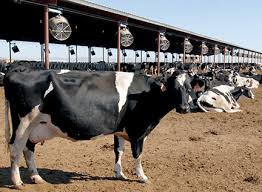Zimbabwe milk production bulks 17.13 percent
Milk production in Zimbabwe rose 17.13 percent to 45,86 million litres in the first five months of 2024 from 38 million litres in the comparative period last year on the back of effective Public Private Partnerships (PPPs), latest figures show.
The southern African nation’s milk output is firing on all cylinders despite the impact of El Nino induced drought. This comes as there have been reduced feedstocks in the form of roughage (maize silage) and other protein sources.
Statistics from the Ministry of Lands, Agriculture, Fisheries, Water and Rural Development’s Dairy Services Department, show that the country’s milk intake by processors went up 21 percent to 42,11 million litres from 34,83 million litres recorded in the same period last year.
Similarly, retail milk production increased by 18 percent to 3,73 million litres compared to 3,17 million litres in the prior period.
The average milk output for the period under review stood at 9,16 million litres. In the first 5 months of 2023, it was 7,6 million litres.
May milk production was up 20,71 percent compared to the same month last year. May production totalled 9,49 million litres, up from 7,86 million litres in 2023.
At 9,49 million litres, this year’s May milk output was 5 percent higher compared to 9,04 million litres registered in April this year.
January milk output of 9,52 million litres is the highest so far.
Experts say dairy cows will do well in cold temperatures, provided they are dry and protected from wind and drafts.
The annual milk requirement stands at about 120 million litres and the country has been supplementing through imports.
Zimbabwe’s milk production rose nine percent to 99,82 million litres in 2023 from 91,39 million litres in 2022.
However, it was forecasted to reach 100 million litres, a 7,5 percent increase in milk output when compared with 2022, but slightly below the set target of 103 million litres for 2023.
Transforming the Zimbabwe Dairy Value Chain (TranZDVC) project coordinator, Dr Edson Chifamba, said efforts to boost Zimbabwe’s dairy industry include adding livestock and breeding, with both public and private sectors importing dairy heifers.
“Aiming to reduce dairy costs from 76 percent to below 45 percent of total variable costs, initiatives focus on prudent high-protein on-farm feed production,” he said.
Comprehensive training for dairy farmers, conducted by the Ministry of Lands, Agriculture, Fisheries, Water and Rural Development, the Zimbabwe Association of Dairy Farmers (ZADF), and private sector players, ensures high standards of skills, attitude, and aptitude.
The government’s command silage scheme provides cereal and legume inputs for silage and fodder.
The EU-funded project, TranZDVC, which ran from 2019 to 2023, collaborated with the government to support dairy value chain players.
It provided 14 large-scale dairy processors and farmers with €40,000 grants each for dairy productive assets, benefiting at least 10 small-scale farmers each.
Additionally, 36 milk collection centres and small-scale processors received €10,000 grants each, while 22 medium-scale farmers received €10,000 each and 850 small-scale farmers received €2,000 each to support their dairy enterprises.
The project imported 500 in-calf dairy heifers, distributing them to 288 small-scale farmers on a 1:1 match basis, facilitated through dairy services and Zimbabwe Association of Dairy Farmers.
However, Zimbabwean dairy farmers have identified key support areas crucial for their operations. According to a recent survey conducted among farmers by TransZDVA, access to low-cost feed emerges as a top priority, with calls for improved availability of inputs and affordable feed ingredients sourced internationally.
Coupled with this is a pressing need for reduced compliance costs within the dairy sector to ease financial burdens on farmers.
“Farmers also highlighted the importance of fair raw milk pricing and dependable milk off-takers to ensure stable income streams. Access to affordable dairy heifers and semen was noted as essential for genetic improvement and herd expansion.
“Moreover, long-term financing options specific to dairy enterprises are sought to facilitate sustainable growth,” Dr Chifamba added.
Addressing infrastructure needs, farmers emphasised the urgency for secure land tenure with 99-year lease farms to encourage investment. Continuous training programmes in dairy business management, particularly for small-scale farmers, were also underscored as vital for improving operational efficiency.
Dr Chifamba said; “Access to reliable water sources, such as dams and boreholes, alongside dependable energy supplies, rounded out the list of critical needs identified by dairy sector stakeholders.”
These concerted efforts, farmers believe, are integral to enhancing the sector’s resilience and long-term viability.-ebusinessweekly









